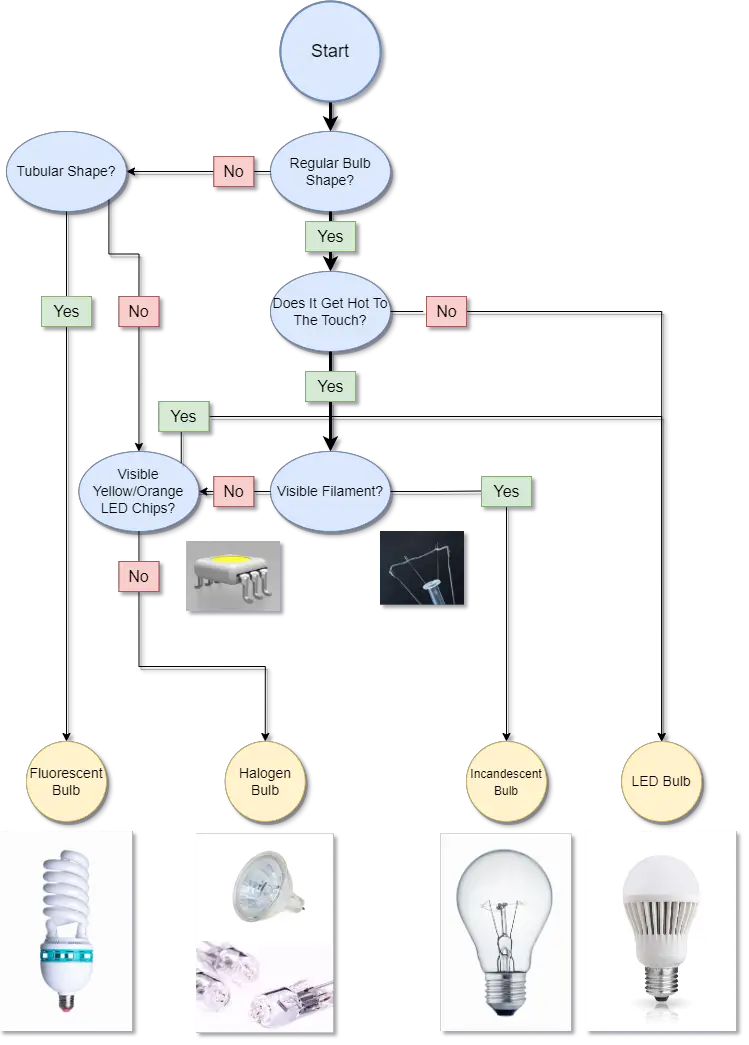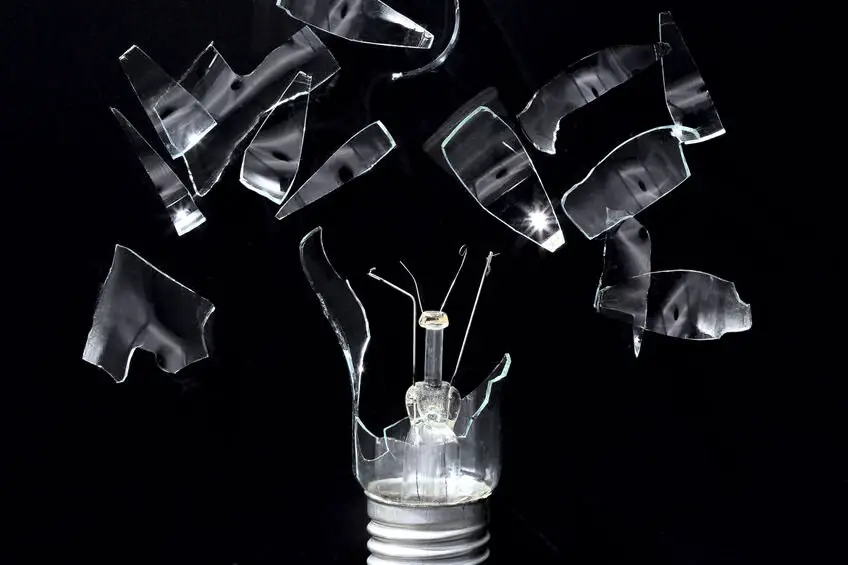Comparing Light Bulbs By Heat Emission
The primary purpose of light bulbs is obviously to produce light but in the process of producing light, it is almost impossible to not produce any heat in the process.
In this following article, we will go over how much energy goes towards creating energy instead of light and how hot each individual bulb gets.
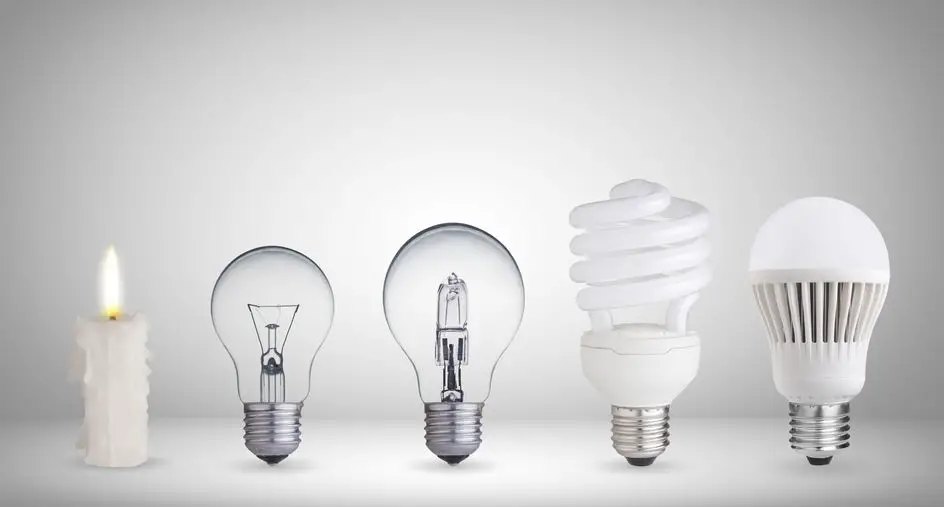
Heat Generation Of Incandescent Bulbs
The incandescent bulb is the first ever light bulb to be created and is therefore one of the more energy-inefficient ones on this list.
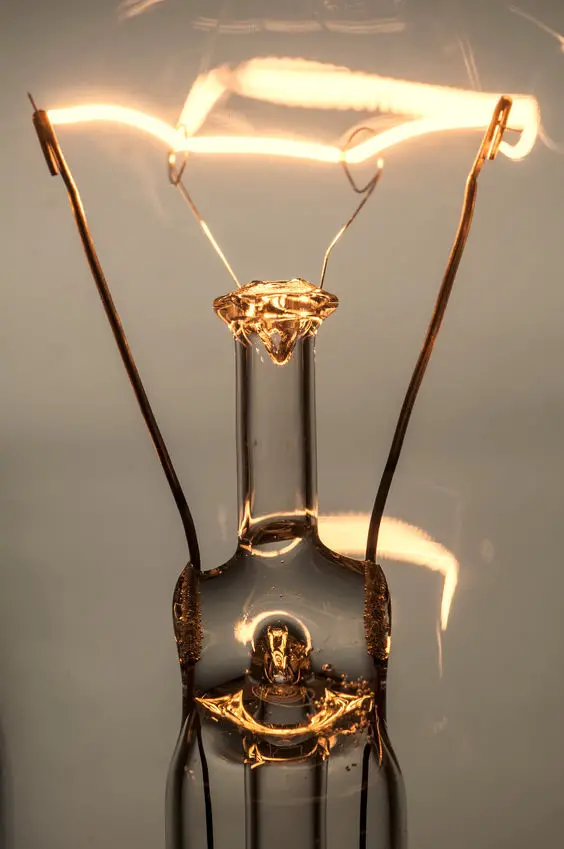
The actual glowing filament reaches temperatures as high as 2500 °C (4600 °F) whereas the glass bulb it’s surrounded by reaches temperatures of around 200-260 °C (392-500 °F) from the heat emitted by the filament.
The reason for it to reach temperatures this high is that the tungsten filament won’t glow and produce light unless it reaches a certain temperature.
This also ties into what makes this bulb so energy inefficient. A lot of the energy that you put into this lamp goes toward creating heat instead of light due to the principle of light production it uses.
Only about 5% of the incandescent lamps’ energy goes towards creating light whereas the other 95% of the energy goes towards creating heat.
Heat Generation Of Halogen Bulbs
The halogen bulb is widely regarded as an upgrade from the regular incandescent bulb as they use the same principle for producing light. The difference between the two is the addition of halogen which causes it to have some different properties.

The most relevant difference for this comparison is the fact that the halogen bulb runs at a higher temperature than the incandescent bulb.
This is possible because the added halogen allows the filament to last longer and also function at higher temperatures.
While the incandescent bulb filament reaches temperatures as high as 2500 °C (4600 °F) the halogen bulb will reach temperatures around 2500-2700 °C (4600-4892 °F) while keeping the glass bulb at around 260 °C (500 °F).
However, it also becomes a little bit more efficient in terms of energy wasted as heat. About 10-20% of the given energy is turned into light whereas 80%-90% is turned into heat with a halogen bulb.
Heat Generation Of Compact Fluorescent Bulbs (CFL)
While the CFL doesn’t produce heat as a means of creating light as the previous bulbs mentioned, the principle of light used for the CFL also produces significant heat.
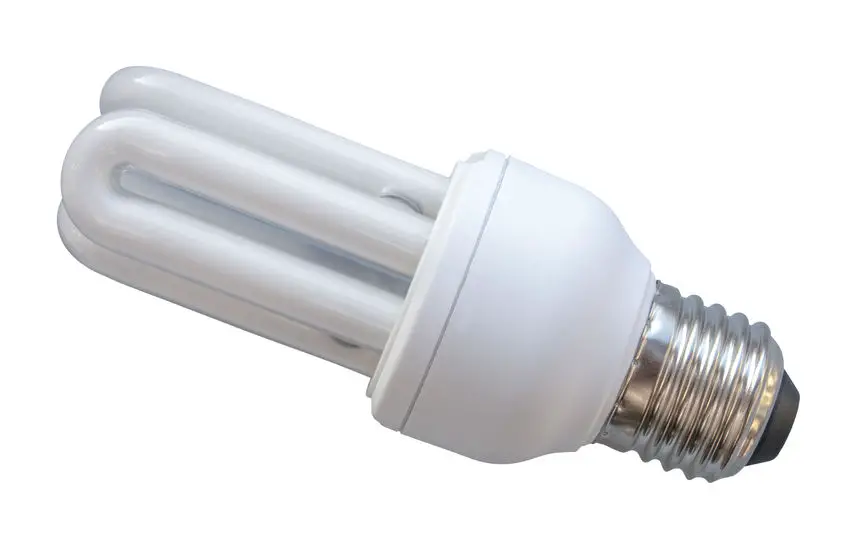
The main principle the CFL uses is a way of “exciting” electrons to release energy in the form of photons, the “light particles“. As the electrons move around creating light it also creates a noticeable amount of heat.
The CFL will reach temperatures of around 80°C (~180°F). Around 25-30% of the inputted energy will be converted to visible light whereas 70-75% is turned into heat.
Heat Generation Of Light Emitting Diodes (LED)
The LED is the best man-made light source in terms of energy efficiency and minimal heat losses to date. This is because the way it generates light simply produces very little heat.

The LED consists of a bunch of LED chips which themselves contain a singular light-emitting diode.
These diodes require very little energy themselves to produce light, meaning there is far potential for energy losses in the form of heat.
The operating temperatures of an LED can differ between manufacturers and what their intended use is. Generally speaking, the operating temperatures of an LED is anywhere between 20-80 °C (68-140°F).
Today’s more modern LEDs will turn about 80% of inputted energy into visible light whereas the other 20% becomes heat.
The generated heat however doesn’t radiate from the diodes and instead must be dissipated through some form of the cooling solution. The most common cooling solution for LED bulbs involves some form of heat sink.
Heat Generation Of Sodium Lamps
The way a sodium-based lamp produces light is similar to the way a CFL does it. Much like the CFL sodium lamps have a particular chemical compound that reacts with electrons to produce light.
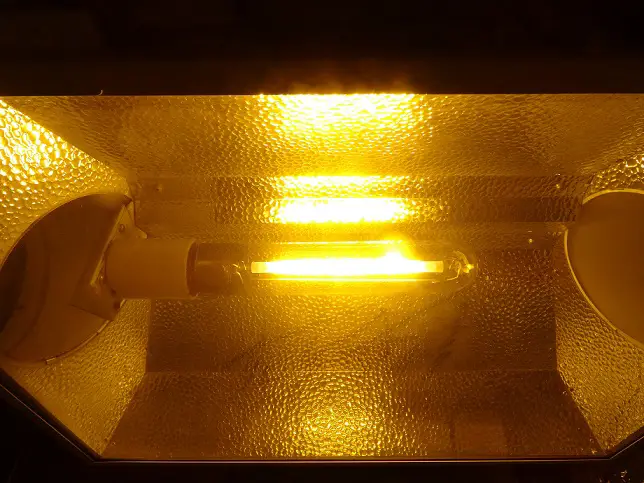
This also means that there will be a significant amount of heat produced as a result of this aswell. The efficiency of them however depends on which specific construction of sodium lamp you measure.
The most common types of sodium lamps are high-pressure sodium (HPS) and low-pressure sodium (LPS).
Since they use the same principle of creating light they operate at the same temperature, which is around 260 °C (500 °F).
As mentioned the efficiency is slightly different between the two constructions. The LPS turns about 35% of the inputted energy into visible light whereas the HPS manages around 30%.
The reason for this difference is that the higher pressure of the HPS causes it to lose some efficiency while making it last longer and giving off a more balanced light than the LPS.
Comparison
With the information above we can start to compare the different bulbs by the measurable parameters given.
Firstly we will compare them by how much heat is created through these different bulbs.
As previously mentioned the halogen and incandescent bulb runs at far hotter temperatures than the others due to the fact that their principle of light creation involves massive heat generation as a means of light production.
This can however be a bit misleading as to how much heat they emit to their surroundings. A more accurate measurement for this would be to compare them by the actual bulb’s temperature.
A chart based on those numbers would look like this:
This chart is a lot more even due to the fact that the type of glass used for these bulbs usually doesn’t hold on to more than 260 °C (500 °F) at regular room temperature.
With this information, it is clear that the heat emission is somewhat similar between the different bulbs, with the most obvious outliers being the CFL and LED. This will also reflect a bit on their ability to turn energy into light.
This chart shows quite clearly that the bulbs that rely on heat generation for light end up on the lower end of this parameter for the reasons stated above. They simply lose efficiency by creating heat instead of light.
One thing that could be seen as an anomaly to the pattern is the fact that the LPS and HPS operate at way higher temperatures than the LED but still manage to be in a similar efficiency range. This is because where the LPS and HPS gain in efficiency they lose in light quality.
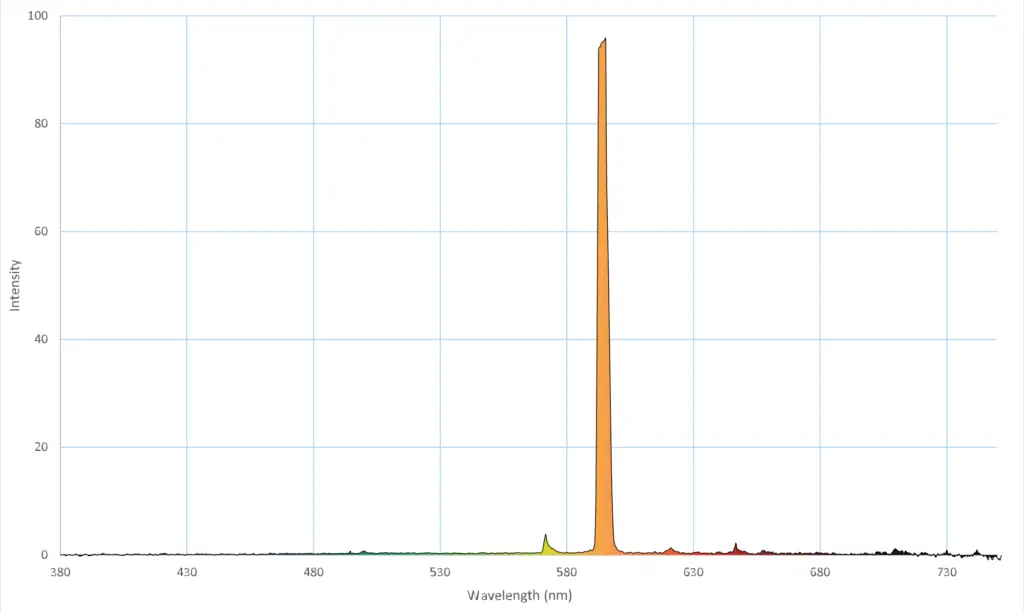
These two bulbs have a good light efficiency but a poor quality of light. The light they generate is a very monochromatic yellow because that is the base colour sodium normally gives off.
This holds especially true for the LPS since the HPS gets a more even spectral curve with the added air pressure within the bulb.
The fact that they are rather energy efficient has also prompted these bulbs to be commonly used in places where lighting up a large area is needed. The most common example of this is in road traffic, highways specifically.
If you wish to know more about where these different bulbs are used we recommend you go here.
Summary
The light bulb that generates the most amount of heat is by far the halogen bulb which reaches temperatures of 2700 °C (4900°F) in order to produce light.
This is much contrary to LEDs and CFLs which usually only reach temperatures as high as 80 °C (140°F). This means that LEDs are by far the coolest commonly available bulb.

